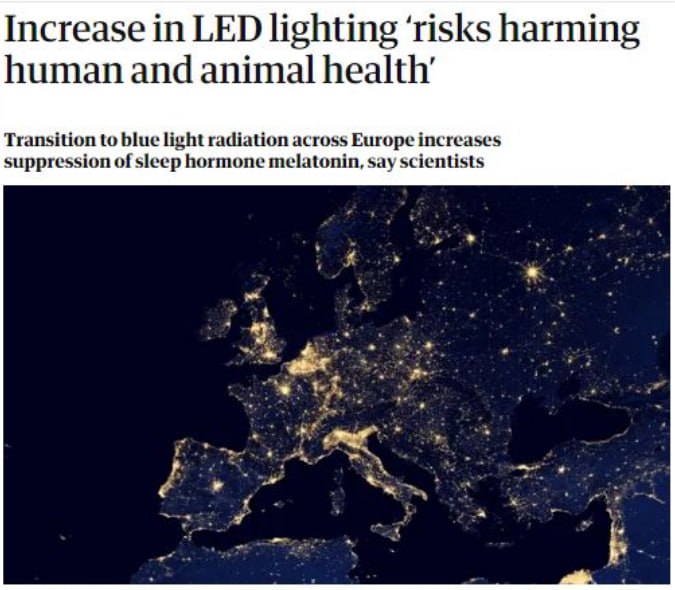People are waking up to the dangers of LEDs.
According to a study, the amount of blue light from artificial sources is increasing and could have detrimental effects on both human health and the environment as a whole.
Researchers at the University of Exeter have noticed a change in the types of nighttime lighting technologies that European nations are employing to illuminate their streets and structures. They have discovered that the white emissions from LEDs are quickly replacing the orange emissions from older sodium lights, based on images taken by the International Space Station (ISS).
Despite the fact that LED lighting uses less energy and is less expensive to operate, the researchers claim that the increased blue light radiation it produces is having “substantial biological impacts” throughout the continent. Additionally, the study asserts that earlier investigations into the consequences of light pollution have understated the effects of blue light radiation.
The primary negative impact of blue light on health is its capacity to inhibit the synthesis of melatonin, a hormone that controls sleep cycles in humans and other living things. Increasing exposure to artificial blue light has been linked to poorer sleeping patterns, which over time can result in a number of chronic health conditions, according to numerous scientific studies.
According to the study, the decrease in star visibility in the night sky caused by the increase in blue light radiation in Europe “may have impacts on people’s sense of nature.” Because it can cause them to move in different directions toward or away from light sources, blue light can also affect the behavior of animals, such as moths and bats.
If people only knew how bad the situation is.

